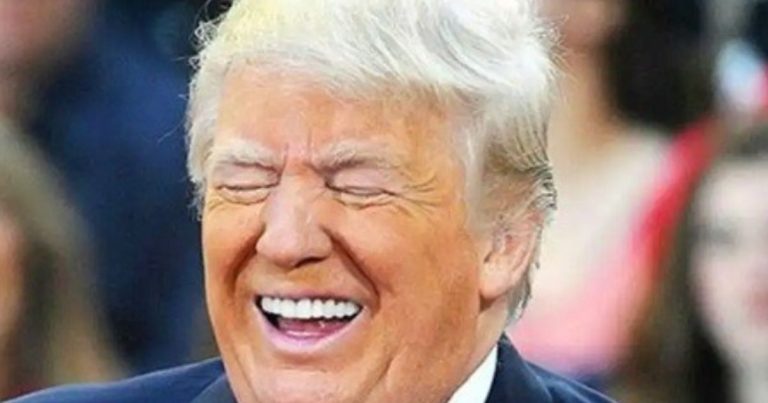
The sound of assembly lines has a distinctive rhythm, a mechanical heartbeat that once defined countless American towns. For decades, that rhythm faded as manufacturing jobs disappeared overseas, leaving behind empty factories and struggling communities. The pulse weakened as automotive giants found cheaper labor in Mexico, Canada, and beyond. Towns that once thrived on manufacturing pride watched as their economic lifeblood drained away, victims of globalization’s relentless march.
Promises to revive American manufacturing have been plentiful from politicians of all stripes. But concrete results? Those have been in far shorter supply. When President Trump announced his aggressive 25% tariff on imported vehicles earlier this year, critics were quick to predict economic calamity. Major news outlets featured economists warning of price increases, supply chain disruptions, and potential job losses. The Washington establishment insisted consumers would bear the burden through higher prices.
Liberal pundits declared the tariffs would trigger a recession. Financial analysts projected devastating impacts on the automotive sector. Even some conservatives expressed concern about disrupting international trade relationships. “This will hurt American consumers more than it helps American workers,” became the common refrain among the president’s critics.
Yet something unexpected is happening across America’s manufacturing landscape. The doom and gloom predictions aren’t materializing as expected. Instead, a different pattern is emerging – one that suggests Trump’s hard-nosed approach to international trade might be delivering exactly the results he promised.
America First Manufacturing Revival
One of Japan’s largest automakers is now considering a significant production shift that would dramatically increase its American manufacturing footprint.
From ‘Fox Business’:
“The automaker’s goal is to ensure 90% of U.S. sales are with vehicles produced domestically, according to a report by Japanese newspaper Nikkei. The company is specifically looking at potentially moving production of its CR-V and Civic vehicles to the U.S. to support this goal.”
Honda’s potential move would increase its U.S. production by approximately 30% over the next few years, adding more employees and shifts to its American operations. While Honda officials have issued statements saying no final decisions have been made, the Nikkei report suggests serious consideration is being given to relocating production from Mexican and Canadian facilities.
Honda isn’t alone in responding to Trump’s tariff strategy. Hyundai recently announced plans to invest a staggering $20 billion in U.S. manufacturing operations by 2028. About $6 billion of that investment will go toward localizing parts production and building a next-generation steel plant that will employ over 1,400 Americans. Nissan has reversed plans to reduce operations at its Tennessee plant, keeping two full shifts running to strengthen domestic production.
Even General Motors is adjusting its strategy, shifting more assembly of its popular light-duty trucks to its plant in Fort Wayne, Indiana. The reshoring trend extends beyond automakers – Samsung and LG are reportedly considering moving appliance production from Mexico to their facilities in South Carolina and Tennessee.
The Art of the Deal in Action
What critics failed to understand about Trump’s tariff approach was its fundamental purpose – not to raise prices, but to force corporations to rethink their global production strategies. The tariffs were always meant to be a negotiating tool, leverage to bring manufacturing jobs back to American soil. As a businessman first and politician second, Trump understood what would motivate corporate decision-making.
For companies selling large volumes in the American market, a 25% tariff creates a simple mathematical reality that makes domestic production more attractive. And that was precisely the point. When Dave Ramsey recently commented that recession fears over tariffs were “not a drama queen thing,” he was acknowledging the resilience of American business to adapt to new economic realities.
The pattern now emerging shows Trump’s instincts were correct. Rather than simply passing costs to consumers, companies are repositioning their operations to avoid the tariffs altogether by manufacturing where their customers live. Isn’t this exactly what a skilled negotiator would expect? The media might not admit it, but the results speak for themselves.
American Pride in American Products
There’s something deeply satisfying about seeing “Made in America” on products again. It’s not just economic theory – it’s about national pride, self-reliance, and the dignity of work. When Generac Power Systems recently moved production back to Wisconsin from China, creating 80 new American jobs, it represented more than just statistical employment growth. It meant American families supported by American manufacturing.
I’ve always believed that a country that doesn’t make things eventually loses its ability to sustain itself. And let’s be honest, who wouldn’t prefer knowing their vehicle was built by American workers earning good wages rather than imported from overseas?
The Honda story is particularly telling because it demonstrates how Trump’s policies are reversing decades of manufacturing flight. Honda has long relied on the U.S. as its most important market, selling approximately 1.4 million vehicles here last year – nearly 40% of its global total. Yet until now, about two-fifths of those cars were imported from Canada and Mexico. The America First approach is changing that equation.
Remember when the experts told us this couldn’t be done? That manufacturing jobs were gone forever? That tariffs would only hurt consumers? Those same “experts” are now conspicuously quiet as their predictions fall flat.
Trump’s dealmaking expertise is transforming America’s industrial landscape in ways his critics claimed impossible. While they worried about theoretical price increases, real American jobs are coming home. The manufacturing heartbeat that had grown faint is finding its rhythm again, and American workers are the beneficiaries.
The assembly lines are revving up. The mechanical heartbeat of American manufacturing is growing stronger. And the art of the deal is bringing jobs back home – exactly as Trump promised, and exactly as his supporters knew he would.
Key Takeaways
- Honda plans to ensure 90% of vehicles sold in America are made in America, potentially increasing US production by 30%
- Multiple automakers including Hyundai, Nissan, and GM are reshoring production to avoid Trump’s strategic 25% tariff
- Despite predictions of economic damage, Trump’s tariff strategy is achieving its intended goal of bringing manufacturing jobs home
- American workers and communities benefit when companies make products where their customers live
Sources: Fox Business, New York Post


